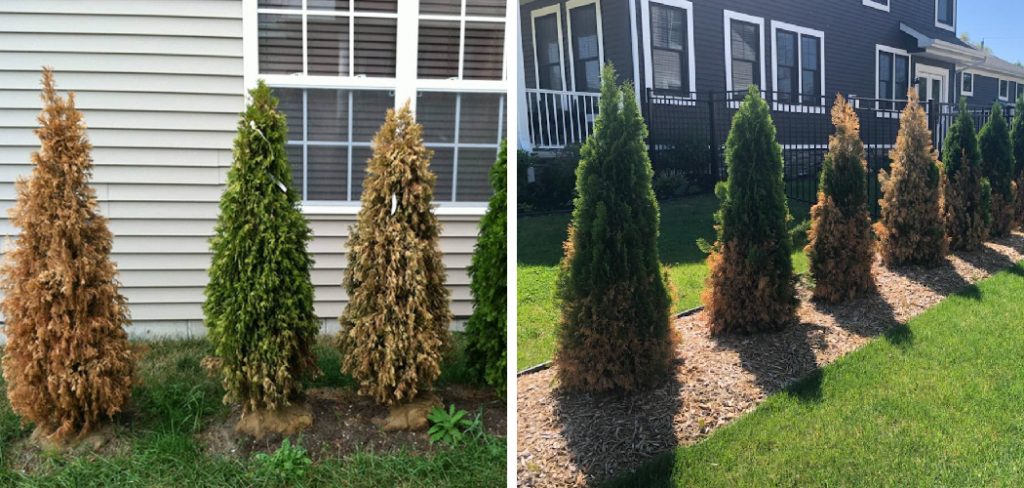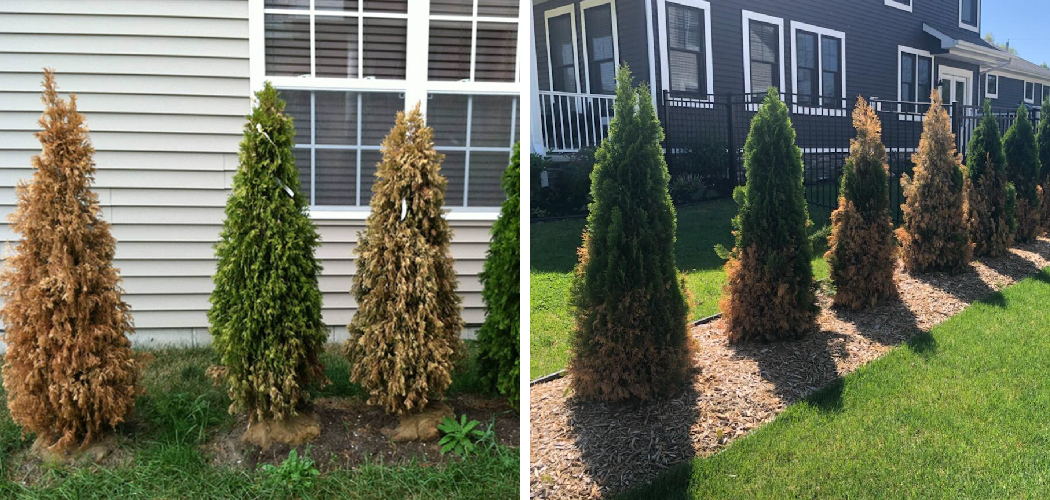To fix arborvitae, prune out any dead or damaged branches and provide adequate water and fertilizer for healthy growth. Arborvitae plants are a popular choice for hedging and landscaping due to their dense foliage and decorative appeal.
However, these plants can sometimes encounter issues that require attention and care. If you notice your arborvitae looking less vibrant or exhibiting signs of damage, it is important to take action promptly. This article will guide you on how to fix arborvitae, ensuring their health and beauty for years to come.
By following a few simple steps, such as proper pruning, watering, and fertilization, you can revive and maintain the vitality of your arborvitae plants. With the right approach, you can easily restore their health and restore the natural beauty they bring to your outdoor space.

Understanding Arborvitae Damage
Arborvitae damage can be frustrating, but understanding the signs of distress is crucial. Identifying the underlying issues is the first step towards fixing the problem. Take a close look at your arborvitae to assess the extent of the damage. Look for yellow or browning foliage, wilting branches, or unusual growth patterns.
These could indicate pests, diseases, or environmental stressors. Once you have identified the issue, you can take appropriate action to address it. Pruning dead or damaged branches, improving soil drainage, or implementing pest control measures may be necessary. Regularly inspect and maintain your arborvitae to keep it healthy and vibrant.
Remember that timely intervention can prevent further damage and ensure the long-term health of your plants.
Diagnosing Arborvitae Issues
Diagnosing arborvitae issues requires careful inspection of the foliage and branches, checking for potential pest infestations. Additionally, analyzing the soil conditions is crucial for identifying underlying problems. By closely examining the leaves and stems, you can look for signs of discoloration, wilting, or abnormal growth, which may indicate disease or nutrient deficiencies.
Regularly inspecting the tree for pests such as spider mites, bagworms, or scale insects is essential. If you notice any pests, take appropriate steps for control. Moreover, evaluating the moisture levels and drainage in the soil is vital to ensure proper hydration for the arborvitae.
Testing the soil pH and fertility can help determine if any amendments, like lime or fertilizer, are needed to improve the growing conditions. Proper diagnosis and intervention will help you fix any arborvitae-related issues effectively.
How to Fix Arborvitae: Step by Step Guide
Fixing Arborvitae Problems
Arborvitae trees can encounter various problems that require attention and corrective measures. One essential step is pruning and trimming techniques which promote proper growth and maintain a desirable shape. Additionally, implementing pest control measures is crucial to address infestations and protect the tree from damage.
Furthermore, soil amendment and fertilization methods can help improve the overall health and vitality of arborvitae. It is important to provide the right nutrients for strong root development and foliage growth. Lastly, ensuring proper watering practices, such as consistent moisture levels and avoiding overwatering, will help prevent issues like root rot.
By following these essential steps, you can effectively fix arborvitae problems and maintain healthy, vibrant trees in your landscape.
Restoring Arborvitae Health: Best Practices
Restoring the health of arborvitae requires providing adequate sunlight and shade as per its needs. Choosing appropriate planting locations plays a vital role in ensuring their growth. Monitoring and managing irrigation is crucial in preventing over or under watering. It is important to recognize signs of recovery, such as new growth or improved foliage color.
Maintaining a balanced environment with proper care will aid in the overall health and well-being of arborvitae. Rescuing these plants from decline takes patience, knowledge, and dedication. Remember to give them the attention they require and take necessary corrective actions when needed.
By following these best practices, you can effectively fix the health of arborvitae.
Preventing Future Arborvitae Issues
Regular maintenance and care routines are essential for preventing future arborvitae issues. It is crucial to protect these trees from extreme weather conditions, as they can cause damage. By regularly inspecting and trimming arborvitae, you can keep them healthy and minimize the risk of any potential problems.
It is important to know when it is necessary to seek professional assistance, as some issues may require specialized knowledge and tools. Ignoring or mishandling arborvitae problems can lead to irreversible damage. Therefore, staying proactive and addressing any concerns promptly can help maintain the vitality and beauty of your arborvitae.
Remember to keep up with maintenance tasks and seek professional help when needed to ensure the longevity of your trees.
Frequently Asked Questions Of How To Fix Arborvitae
How Do You Revive A Dying Arborvitae?
To revive a dying arborvitae, provide proper watering, trim dead branches, fertilize with balanced nutrients, and protect from pests and diseases.
What To Do With Damaged Arborvitae?
If your arborvitae is damaged, prune affected parts, provide proper watering and fertilizer, and monitor for pests.
Will Arborvitae Grow Back After Topping?
Yes, arborvitae will regrow after being topped.
Will Bent Arborvitae Straighten?
Bent arborvitae can straighten over time with proper care, pruning, and staking.
Conclusion
Arborvitae trees can enhance the beauty and privacy of any landscape. However, they can also face various issues that require attention and care. By following the steps outlined in this blog post, you can effectively diagnose and resolve common problems affecting arborvitae trees.
Regularly inspecting your trees for signs of pests, diseases, and environmental stressors is essential in maintaining their health. Implementing proper watering, fertilization, and pruning practices can go a long way in preventing and treating issues before they escalate. Additionally, providing adequate sunlight and drainage is crucial for supporting the growth and vitality of your arborvitae.
Remember, prevention is key when it comes to maintaining healthy arborvitae trees. By implementing proper care techniques and taking action at the first signs of trouble, you can ensure the longevity and beauty of your arborvitae for years to come.
Taking care of your arborvitae trees can be a rewarding experience that adds value to your property. So, don’t hesitate to put these tips into practice and enjoy the stunning beauty of your healthy arborvitae trees.

